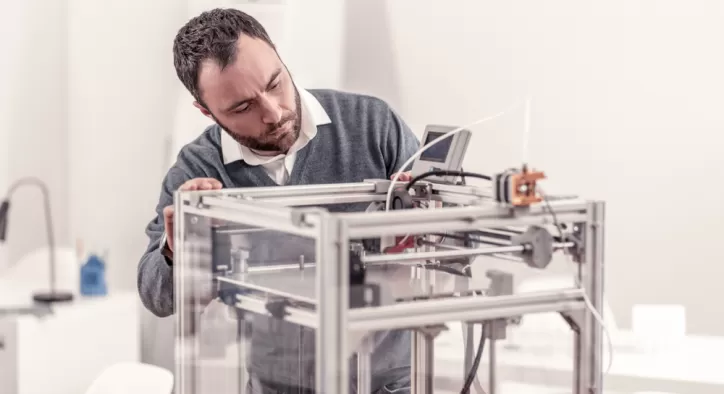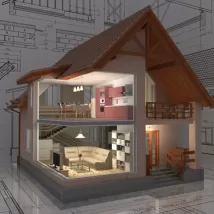- Konu Başlıkları
- 3D Printing and Sustainability: Protecting Nature with Future Technology
- 3D Printing and Sustainability: An Innovative Approach
- Sustainable 3D Printing Technology: Nature-Friendly Production
- Reducing Waste with 3D Printing
- Sustainable 3D Printing and Carbon Footprint
- 3D Printing and Sustainability: 9 Areas Where Eco-Friendly Future Technologies Are Used
- 1. Sustainable 3D Printing Technology in the Construction Sector
- 2. 3D Printing and Sustainability in the Automotive Industry
- 3. 3D Printing and Sustainability in the Aviation Industry
- 4. 3D Printing and Sustainability in Healthcare
- 5. Sustainable 3D Printing in the Fashion and Textile Sector
- 6. 3D Printing Technology and Sustainability in the Food Sector
- 7. Sustainable 3D Printing in Education and Research
- 8. 3D Printing and Sustainability in the Consumer Electronics Sector
- 9. 3D Printing and Sustainability in Art and Design
- The Future of Sustainable 3D Printing Technology
- 3D Printing and Sustainability
3D Printing and Sustainability: Protecting Nature with Future Technology
Today, technology affects every aspect of our lives, and sustainability is becoming more important than ever in this rapidly changing world. At this point, 3D printing and sustainability offer great hope for industries looking for environmentally friendly production methods. It emerges as one of the areas where future production methods are thought to be shaped thanks to the opportunities it offers.
[widget-131]
3D Printing and Sustainability: An Innovative Approach
3D printing technology stands out as an innovation that has the potential to revolutionize the field of sustainability. This technology minimizes material waste by making complex production processes more efficient. While a large amount of waste occurs in traditional production methods, 3D printing reverses this situation in terms of sustainability. Products produced with 3D printing are used only as much as the material needed, which reduces the negative impacts on the environment.

Sustainable 3D Printing Technology: Nature-Friendly Production
Sustainable 3D printing technology contributes to the protection of natural resources. Production with 3D printing consumes much less energy than traditional production methods. Moreover, the variety of materials is also quite wide; it becomes possible to produce environmentally friendly products using biodegradable and recyclable materials. In this respect, the relationship between 3D printing and sustainability becomes much stronger. Now, products can be designed and produced in a way that protects the environment.
Reducing Waste with 3D Printing
3D printing technology integrates sustainability not only into the production process but also into waste management. In traditional production processes, materials usually create a large amount of waste. However, 3D printing ensures that the material is used in exactly the amount needed in terms of sustainability, which significantly reduces waste. In addition, thanks to this technology, old products are recycled and reused, thus contributing to the circular economy model.
Sustainable 3D Printing and Carbon Footprint
Another important issue is reducing the carbon footprint. This relationship between 3D printing and sustainability allows for the minimization of carbon emissions. In traditional production methods, transportation and logistics processes can cause high amounts of carbon emissions. However, since 3D printing technology offers the opportunity for on-site production in terms of sustainability, it minimizes transportation and logistics requirements. This contributes to more efficient use of natural resources and reduced carbon footprint.
3D Printing and Sustainability: 9 Areas Where Eco-Friendly Future Technologies Are Used
The relationship between 3D printing and sustainability is getting stronger today. 3D printing technology plays an important role in the field of sustainability, enabling environmentally friendly production processes. 3D printing sustainability solutions used in different sectors help preserve natural resources and reduce waste. Here are some areas where 3D printing and sustainability are used:
1. Sustainable 3D Printing Technology in the Construction Sector
The construction sector is undergoing a major change in the context of 3D printing technology sustainability. While traditional construction methods lead to a lot of material waste and energy consumption, sustainable 3D printing technology makes construction processes more efficient. Buildings constructed with 3D printing can be built faster and more environmentally friendly by using less material. Buildings made using recycled materials are an important example.
2. 3D Printing and Sustainability in the Automotive Industry
The automotive industry also benefits from 3D printing and sustainability. 3D printing technology allows automobile parts to be lighter, more durable and more environmentally friendly. In terms of sustainability, 3D printing technology allows for more efficient production processes with less material. In addition, automobile parts made with recycled materials contribute to the development of environmentally friendly production processes.
3. 3D Printing and Sustainability in the Aviation Industry
The aviation industry works in significant harmony with 3D printing technology and sustainability. Aircraft parts produced with 3D printing are produced with less energy consumption and transportation requirements are reduced. This means lower carbon emissions during flights. In terms of sustainability, 3D printing minimizes material consumption and reduces waste in the production process.
4. 3D Printing and Sustainability in Healthcare
3D printing and sustainability also offer great opportunities in the healthcare sector. 3D printing technology allows the production of personalized prosthetics and medical devices. Devices made with 3D printing reduce waste by using only the necessary amount of material. In addition, medical devices made with biological materials provide an environmentally friendly production process. 3D printing technology allows for more efficient production with less energy in terms of sustainability.
5. Sustainable 3D Printing in the Fashion and Textile Sector
3D printing technology in the fashion world combines with sustainability to enable environmentally friendly production processes. While traditional textile production consumes a large amount of water and energy, products made with 3D printing are produced using less material. In terms of 3D printing and sustainability, it is possible to produce environmentally friendly fashion products using recycled plastics and biodegradable materials. In the context of sustainability, 3D printing significantly reduces the waste rate in fashion.

6. 3D Printing Technology and Sustainability in the Food Sector
3D printing and sustainability in the food sector offer an approach that increases efficiency, especially in food production processes. Food products are produced more efficiently with 3D printing, which minimizes material waste. In terms of sustainability, 3D printing can be used for the production of edible proteins and alternative food materials. Thus, environmentally friendly methods are developed in food production.
7. Sustainable 3D Printing in Education and Research
Universities and research institutions develop sustainable solutions by using 3D printing technology in education and research processes. Thanks to this technology, prototypes are produced with environmentally friendly materials and new products can be designed with recycled materials. In the context of 3D printing and sustainability, research progresses in an environmentally friendly manner.
8. 3D Printing and Sustainability in the Consumer Electronics Sector
The consumer electronics industry also benefits from 3D printing and sustainability. Electronic devices can be produced more efficiently and environmentally friendly. In terms of sustainability, 3D printing technology significantly reduces material waste in the production of devices. In addition, the use of recycled materials minimizes the negative impacts of these products on the environment.
9. 3D Printing and Sustainability in Art and Design
In the art world, the relationship between 3D printing and sustainability offers artists the opportunity to create environmentally friendly projects. Artists can create their works using recycled materials with 3D printing. In terms of sustainability, 3D printing technology allows art to be produced in an environmentally friendly way. This encourages environmentally friendly production processes in the art world.
3D printing and sustainability shape the production methods of the future by offering environmentally friendly, efficient and innovative solutions in these and similar sectors. The further spread of this technology will help us step into a more sustainable world.
The Future of Sustainable 3D Printing Technology
In the future, innovations in the field of 3D printing and sustainability are expected to become much more widespread. This technology can transform not only production processes but also product design. More efficient and environmentally friendly products can be produced using less material. In addition, thanks to printing made with recycled materials, negative impacts on the environment can be further reduced. Sustainable 3D printing technology has the potential to create new business models and innovations, and offers a roadmap that contributes to the protection of natural resources.
[widget-136]
3D Printing and Sustainability
The relationship between 3D printing and sustainability will play a very important role in the future of industries. While the advantages it provides enable environmentally friendly production processes, it reduces waste, reduces carbon emissions and helps protect natural resources. While this technology allows production to be done more efficiently and environmentally friendly, discovering the potential of sustainable 3D printing technology contributes to building a greener future.
When 3D printing technology is combined with sustainability, we come across not only environmentally friendly, but also more efficient, economical and innovative production processes. This offers an important opportunity for us to step into a more sustainable world in the future.











